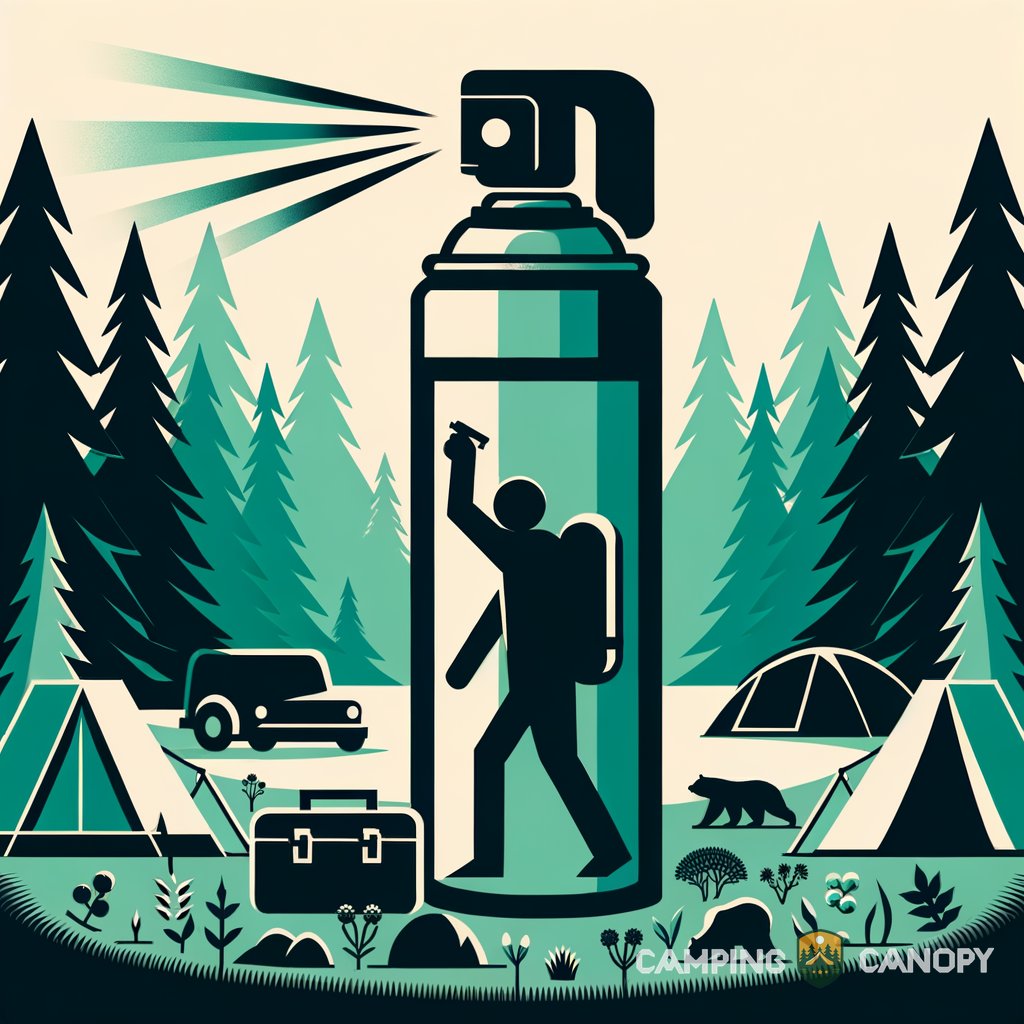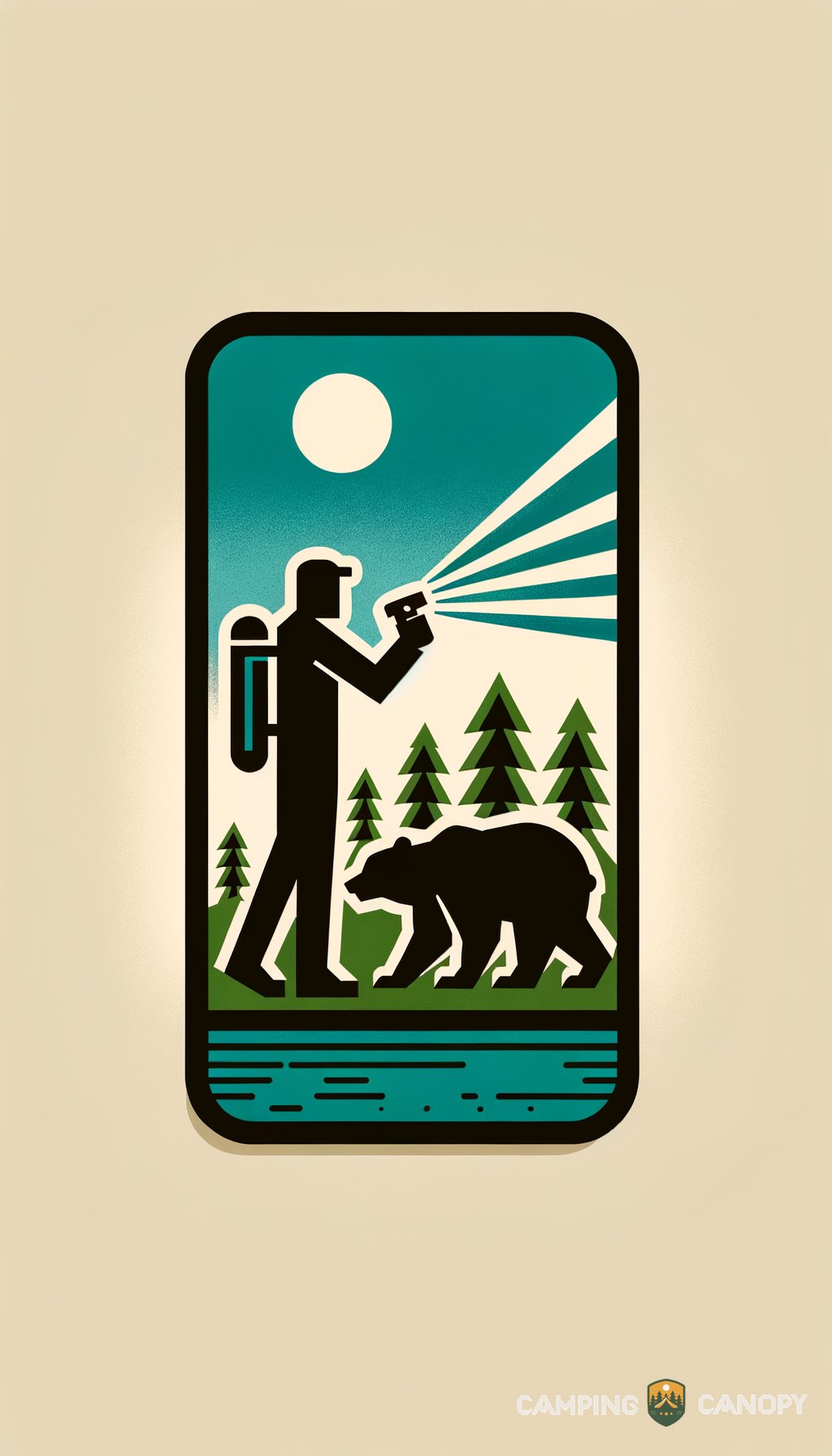After encountering a grizzly on a trek in Yellowstone, knowing the right tools and tactics can mean the difference between a story and a tragedy. In this article, you’ll discover why bear spray is an essential item for your safety in bear country and why its effectiveness is crucial for wilderness adventures.
Key takeaways
- Bear spray is an effective, non-lethal deterrent that provides a safety buffer between you and a bear.
- Always ensure bear spray is easily accessible and practice using it in a safe environment before heading out.
- Educate yourself about bear behavior and signs of bear activity to enhance your preparedness.
- Combine bear spray with other safety practices, such as making noise and using bear-proof containers, to maximize safety.
What is bear spray?
Bear spray is a non-lethal, aerosol-based deterrent used to prevent attacks by bears. It contains capsaicin and related capsaicinoids, which are derived from chili peppers, making it highly effective at causing temporary discomfort and disorientation to the bear without causing long-term harm. The primary purpose of bear spray is to provide hikers, campers, and anyone in bear habitats with a means to safely deter an aggressive or charging bear.

The effectiveness of bear spray lies in its ability to create a cloud of capsaicinoids between the user and the approaching bear. Here’s how it works:
- Creates an immediate barrier: Upon deployment, bear spray emits a dense fog that can reach up to 25 feet, providing a buffer zone between the user and the bear.
- Temporarily incapacitates the bear: The active ingredients irritate the bear’s eyes, nose, and lungs, leading to temporary blindness and difficulty breathing, which typically causes the bear to retreat.
For those wondering about its practicality and use, carry and deploying bear spray correctly is critical for its success. Here are key points to remember:
- Accessibility: Always have bear spray readily accessible, not buried in a backpack.
- Practice: Familiarize yourself with the spray mechanism in a non-stressful setting.
- Check regulations: Some areas have specific guidelines or restrictions regarding bear spray.
Understanding and carrying bear spray is a crucial aspect of preparing for a trip into areas inhabited by bears. It’s not just about your safety, but also about coexisting with wildlife responsibly. For more detailed insights into camping safely in bear habitats, check out the comprehensive guide about the Leave No Trace principle.
How effective is bear spray in real-world situations?
Bear spray has been statistically shown to be highly effective in deterring bear attacks if used correctly. Research indicates that bear spray is successful in about 92% of close-range encounters with bears. It provides a safety margin that no other deterrent offers, giving both the bear and the user a chance to avoid injury.
Key studies and findings
Studies conducted by bear biologists have consistently supported the use of bear spray. For instance, a study in Alaska analyzed hundreds of bear encounters and found that bear spray stopped a bear’s undesirable behavior in 95% of the cases. These findings emphasize that knowledge and preparedness can significantly increase safety in bear habitats.
Practical tips for deployment
- Check wind direction: Before spraying, quickly assess the direction of the wind to avoid self-contamination.
- Aim slightly downward: Aim the canister slightly downward as bears will typically charge at ground level.
- Keep the nozzle clear: Regularly check the spray nozzle to ensure it isn’t blocked with debris.
Tool tip = { “title”: “Tip: Handling bear spray effectively”, “content”: [ “Always test your bear spray (preferably in a safe, controlled environment) to familiarize yourself with its range and spray pattern. Remember, practice makes perfect.” ] }

Where and when is bear spray necessary?
Bear spray is particularly necessary in North America’s national parks or wilderness areas where there is known bear activity. Both black bears and grizzly bears inhabit these areas, and the chances of encounters increase if natural food sources are scarce.
Geographic necessities
Depending on where you are hiking or camping, the necessity for bear spray varies. For instance, parks like Yellowstone, Glacier, and the Rocky Mountain National Parks all have healthy bear populations. Rangers in these areas strongly advise carrying bear spray.
Seasonal considerations
Bear activity varies with the seasons. During spring and early summer, bears are more active as they are foraging and replenishing after hibernation.
Fall also sees increased bear activity as they prepare for winter. Carrying bear spray during these times is crucial for safety.
Legal and transportation considerations for bear spray
Traveling with bear spray comes with specific regulations, especially when crossing international borders or flying. Bear spray is considered a hazardous material and is regulated by various agencies depending on the transport method.
Air travel with bear spray
- FAA regulations: The Federal Aviation Administration (FAA) prohibits passengers from bringing bear spray on commercial flights either in checked baggage or carry-on.
- Alternative options: If flying to a destination where bear spray is necessary, consider purchasing it locally upon arrival or check for rental options in the area.
International travel considerations
Different countries have differing regulations on the possession and use of bear spray. For example, in Canada, bear spray is legal but must be labeled for use against bears; personal defense pepper sprays are not legal.
| Location | Legal Status | Recommended Use |
|---|---|---|
| USA | Legal | Wilderness areas |
| Canada | Legal (as bear deterrent) | National parks and wilderness |
| Europe | Varies by country | Check local regulations |
For those traveling by other means or crossing into different countries, ensuring compliance with local laws and transportation regulations is crucial.
Make sure to research and prepare adequately to avoid any legal complications and to guarantee you have the necessary protection when exploring bear-populated areas. For more insights into how to plan for different types of camping experiences, consider exploring what is camping.
Alternative bear deterrents and strategies
While bear spray is a highly recommended bear deterrent, it’s crucial to have a multi-faceted approach when it comes to bear safety. Let’s explore a few more strategies and tools that can enhance your safety in bear-populated areas.
Using noise to deter bears
One effective strategy to prevent bear encounters is to make noise. Bear bells, while popular, are usually not loud enough. Instead, talking loudly, singing, or clapping can alert bears to your presence from a distance, preventing surprise encounters.
Bear-proof containers
Using bear-proof containers to store your food and scented items is essential in minimizing attractants at your campsite. These specially designed containers are resistant to bears and help keep odors contained, which can otherwise draw bears to your location.
Understanding bear behavior
Educating yourself about bear behavior can significantly improve your safety by helping you recognize the signs of bear activity and better predict their reactions. Knowledge about bear feeding habits, the markings they leave behind, and understanding their body language are all advantageous for avoiding and managing encounters.
Safety protocols when in bear country
Implementing safety protocols when you are in bear country is key. These protocols help ensure that if you do encounter a bear, you are prepared to handle the situation correctly and safely.
Group travel
Whenever possible, travel in groups. Bears are less likely to approach larger groups of people. Groups are louder and more formidable from a bear’s perspective.

During a camping trip in Shenandoah National Park, our group decided to use bear bells. It wasn’t until a ranger advised us to chat or sing instead, emphasizing that our low chiming bells weren’t enough. Luckily, we had bear spray too, but this advice changed how we approached noise as a deterrent.
Chris, Founder of Camping Canopy
Dos and don’ts of using bear spray
When using bear spray, certain practices enhance your safety while others might compromise it. Here’s a quick guide to ensure you’re using this deterrent effectively and safely.
Dos
- Do test your bear spray before heading out to familiarize yourself with its operation.
- Do keep your bear spray easily accessible, not buried in your backpack.
- Do check the expiration date on your bear spray canister.
- Do practice how to quickly remove the safety lock during an emergency.
Don’ts
- Don’t spray it on your gear or around your campsite as a preventive measure.
- Don’t attempt to take bear spray on commercial flights.
- Don’t use bear spray like insect repellent on skin or clothing.
- Don’t forget to check the wind direction before using it to avoid self-contamination.
Retreating safely
If you spot a bear in the distance and it has not seen you, the safest response is to quietly retreat and give the bear a wide berth. Always avoid surprising a bear at close range.
Advantages and disadvantages of bear spray
While bear spray is a critical safety tool in bear country, it’s useful to understand both sides of carrying and using it. Here’s an overview of the pros and cons.
- Highly effective at deterring aggressive behavior in bears, providing a safe way to prevent attacks.
- Non-lethal, ensuring safety without harming the bear, aligning with wildlife conservation principles.
- Provides a significant range of up to 25 feet, allowing for a safe distance between user and bear.
- Can be a deterrent for other large animals, not just bears, enhancing overall wilderness safety.
- Affected by environmental conditions such as wind, which may reduce effectiveness or risk self-contamination.
- Requires proper training to use effectively, especially in stressful situations.
- Not allowed in carry-on or checked luggage which complicates travel to areas where it is needed.
- Possibility of failure due to factors like expired canisters or faulty nozzles.
Frequently asked questions (FAQ)
Yes, bear spray does expire. The chemicals lose their potency over time. Always check the expiry date before heading out and replace canisters past their expiration date.
Bear spray is effective against all common species of North American bears, including black bears and grizzly bears.
If bear spray fails to discharge, retreat slowly if the bear has not noticed you. If the bear is engaging, stand your ground, make yourself appear larger, and speak in a calm, loud voice. Always have a backup plan, such as grouping together if you are not alone.
While bear spray is highly effective, it should not be your sole line of protection. Combine it with proper bear avoidance techniques and camp safety practices.
Bear spray should be stored in a cool, dry place out of direct sunlight. Ensure the canister is securely fastened and the safety latch is engaged to prevent accidental discharge.
Final thoughts
In conclusion, bear spray is a crucial tool for anyone venturing into bear populations. Proper use, combined with other safety measures, significantly increases your chances of a safe wilderness experience.
Always remember, the best encounter with a bear is the one you can avoid. Stay prepared, stay aware, and respect wildlife. For more insights on safely enjoying the great outdoors, make sure to explore our detailed guide on what is camping.
















